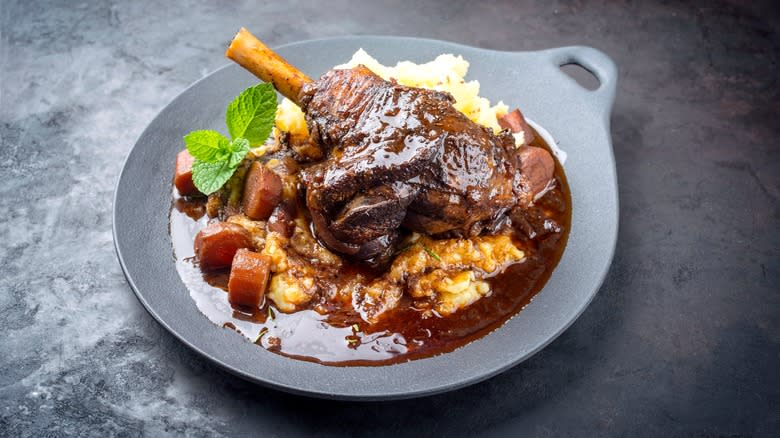Which Cuts Of Meat Are Better For Dry Heat Vs Moist Heat Cooking?

It's usually not a good idea to make binary declarations, but it is a fundamental truth that there are only two ways to cook food: You can only use dry heat or moist heat. Dry heat cooking is done without liquid: baking, grilling, roasting, sautéing, and so on. (Yes, cooking oil is a liquid, but its use in sautés still falls under the "dry" category. Moist heat cooking, which includes methods like braising, poaching, steaming, and the like -- requires liquid. Some kinds of animal protein do just fine being cooked either way, but a few more can only be cooked effectively using one of the two methods.
A good rule of thumb is that any cut of tough meat should be moist-cooked slowly, over low heat, typically in a stew or braise. Tough cuts are universal to all mammal proteins: They're the muscles in the animal that see the most use. Any part responsible for running, hopping, chewing, and the like tends to need more time. Conversely, parts of an animal that don't see a lot of action -- say, near the belly -- can be quite naturally tender and lend themselves to high-heat dry-cooking applications like grilling.
Read more: The 13 Best Steaks For Grilling
Which Cuts Of Meat Are Better Suited For Dry-Heat Cooking?

Dry-heat cooking involves higher temperatures and shortened cooking times. If we're talking about beef, look for cuts that originate closer to the backbone and are largely free of connective tissue: Ribs, tenderloin, ribeye, sirloin, and the like. These are called beef rib primal cuts. Only a few pork cuts qualify for dry heat, most of which come from the loin and belly. Lamb meat leans toward being generally tender, notably cuts from the rear of the animal, or what is known as hindsaddle primal cuts. These include loin chops and the like.
Even though they have to literally swim around all day, there aren't really any tough cuts of fish. Almost all seafood can (and typically should) be cooked in relatively short order. Grilled tuna is exquisite, but if you braised salmon for two hours, it would become an unappetizing mush.
Moist-Heat Cooking: An Ugly Name Describing Beautiful Processes

It's time to cook the tough cuts; that is to say, most any primal cut from the beef forequarter (which includes chuck and brisket) as well as shank from its hindquarter; lamb shanks; and cuts from the pork shoulder (variously known as Boston Butt and Picnic Shoulder). A long, slow braise or a lengthy stewing process makes these already flavorful meats utterly tender and delectable.
As with any rule, there are exceptions. Technically, smoking meat is considered a dry-heat application, and anyone who's had any kind of smoked ham, pulled pork barbecue, or smoked beef brisket can tell you that stuff is divine. The same goes for smoked salmon, although that is a comparatively much shorter process. Conversely, there are plenty of utterly delicious ways of preparing seafood by steaming and poaching -- even though the cooking times are still relatively quick, liquid is still used significantly.
Read the original article on Daily Meal.


